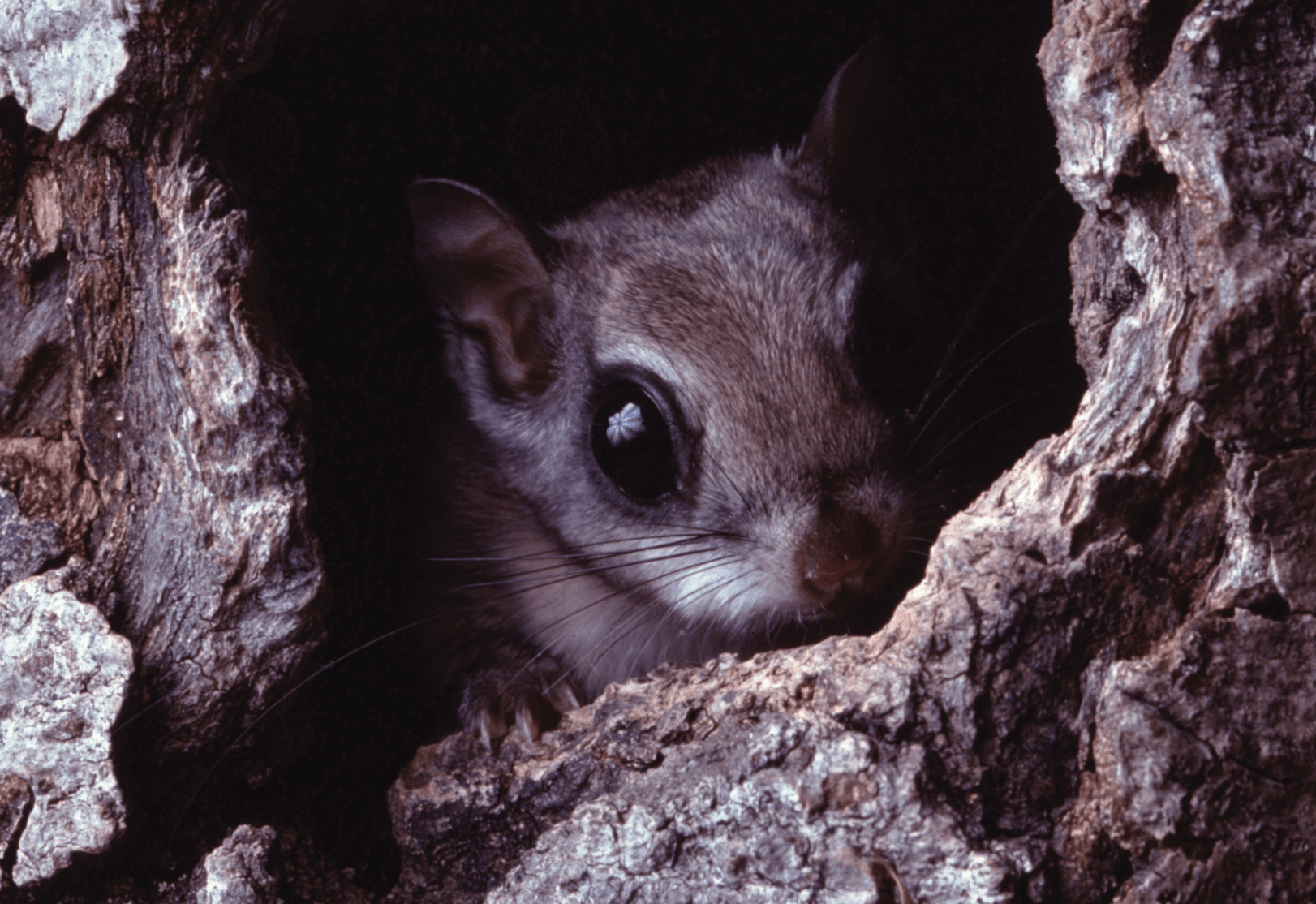
My glimpse was of a ghostly form darting among the trees. A sleek phantom of the forest capturing the moonlight and momentarily flashing it to me before zipping back into the cloaking obscurity of the night. I thought I knew the forest well and yet I had no idea what I’d seen. I ran through the list of possible creatures. It didn’t exhibit the erratic flight of a bat, nor did it move like a perching bird, which should have been both hiding and sleeping so late at night. It seemed smaller than even a Screech Owl and, in my mental playback, I didn’t even recall wingbeats. What could it have been?
For a time, I actually thought I might have imagined the movement–a subtle trick of moonlight among the sway of foliage stirred by the slight breeze that night. I filed it away for a time and thought nothing more of it. Subsequent night sightings confirmed that initial glimpse. There were creatures living among the trees and my suspicions pointed to their identity. A night time walk with my wife solved the mystery. A small, swift form crossed the road perhaps 10 feet aloft just a car length or so ahead of us. It alit on a small Hemlock to our right. I shined my flashlight on the trunk. A moment later, a tiny furry face with enormous eyes peered around the backside of the tree at us. We peered back at the adorable face of a Southern Flying Squirrel.
The Southern Flying Squirrel (Glaucomys volans) is a resident Connecticut (and Greenwich) mammal very few of us have actually seen. Topping out at no more than 8-10 inches in length and just under 2.5 ounces in weight, these tiny tree squirrels are perfectly designed for a life high among the trees and equally high above the ground. With a beautiful silky gray-brown back and sides and a cream colored belly, the Southern Flying Squirrel blends with the trunks of trees extremely well. Its large eyes let in available starlight and moonlight, conferring an excellent survival advantage to its nocturnal lifestyle. Living along the spine of The Appalachian Trail in Connecticut’s Northwest corner as well as among the leafy environs of Fairfield County, these adaptable little beasts are home among the trees and aloft more than 50 feet overhead!

While they navigate masterfully high above the forest floor, they don’t truly fly–they glide. Equipped with a broad, thin and highly flexible fur-covered membrane known as the patagium, the squirrels use it to their advantage. Launching from heights of 60 feet and extending their patagiums as airfoils, these extraordinary micro-mammals are capable of making 90 degree turns in mid air through the use of their flattened, rudder-like tails. More incredibly, they have been recorded making glides of 262 feet! While this gliding ability enables the squirrels to travel within their forest habitat, it also helps them to escape from many potential predators which include: snakes, raccoons, bobcats and fisher. Yet their unique adaptations don’t end with the patagium and night vision. Nature has also equipped these remarkable rodents with keen senses of hearing and smell and, vibrissae, or whiskers. Yet unlike most animals who have vibrissae on their snouts, Southern Flying Squirrels possess vibrissae on their cheeks, chins and ankles, enabling them to navigate by touch alone in virtual darkness!
Coupling these physical adaptations with unique behavioral adaptations gives these year-round-active, arboreal mammals an edge. Though preferring foods such as Hickory nuts and acorns, their opportunistic, omnivorous diet includes: berries, seeds, fruit, bark, fungi, buds, bird eggs, nestlings, insects, young mice and even carrion. In addition, the squirrels’ social nature enhances winter survival, with up to 30 squirrels sharing a communal nest to generate and retain vital body heat needed on freezing winter days. Perhaps most significantly, they invest great quantities of time nurturing their offspring in order to identify predators and perfect the life-saving art of tree-to-tree gliding.
While not every creature exhibits bold traits which offer us invaluable potential insights, it is the discrete creatures which often hold the greatest benefit for observation. By embracing a nocturnal lifestyle, the Southern Flying Squirrel avoids much direct competition from the Gray and Red Squirrels of our region, and by exploiting their unique gliding ability, these little forest phantoms take to the air like no other creature.
If each of us could only utilize our unique strengths, enhanced by a dash of wild wisdom to glide from our current station to our desired location, we too, would soar.
Jim Knox is the Curator of Education for Connecticut’s Beardsley Zoo and serves as a Science Adviser for The Bruce Museum. He has a passion for sharing his work with endangered species here in Connecticut and beyond.




